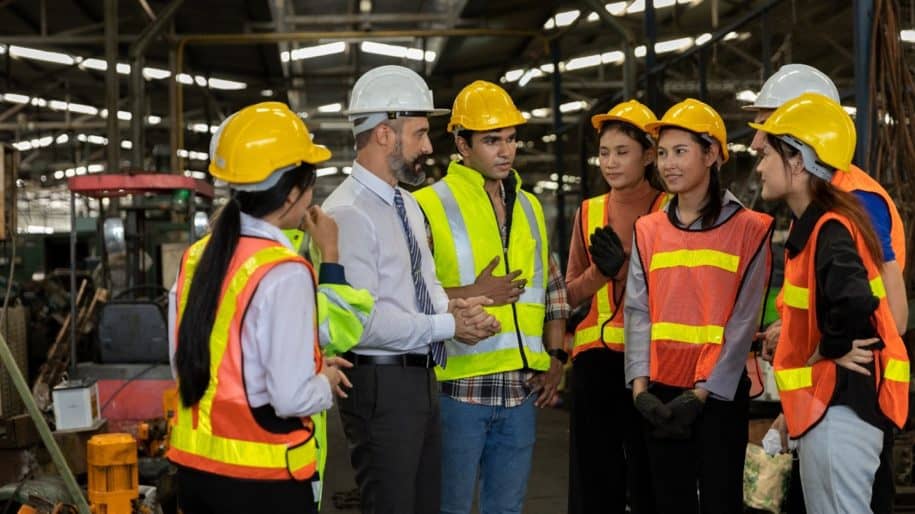All employees are openly encouraged to report hazards when they are discovered. In many organizations, this is a basic tenet and often included in the duties and responsibilities of each employee. Some organizations take this one step further and utilize worksite safety observations as an activity to provide employees with meaningful involvement in the safety program. This is commendable but certain requirements must be met to ensure a beneficial experience for both the company and the employees. First, the employees must be properly trained. Second, employees must have a way to report findings efficiently and effectively, preferably including the work-stop authority to engage with the observed party so that a safe outcome can be determined and reached.
As defined by OSHA, a “competent person” is “one who is capable of identifying existing and predictable hazards in the surroundings or working conditions which are unsanitary, hazardous, or dangerous to employees, and who has the authorization to take prompt corrective measures to eliminate them.” Every person tasked with performing worksite safety observations should ideally meet this definition. An employee can obtain the capability to be deemed a “competent person” through a combination of training and experience. The authorization process should involve tools and techniques to promote positive intercession and must be established with both the company and the employee.
This leads me to a recent conversation I had with a safety director on this very subject. The following is an abridged transcription of the exchange (Safety Director = SD; Myself = CU):
| SD | Cary, I have all of my employees doing observations but I keep getting pencil-whipped cards and the focus tends to be on hard hats and safety glasses. I would be better off just doing it myself! |
| CU | Well, what level of hazard recognition training have you provided prior to asking for widespread involvement? |
| SD | We provide OSHA 10-hour classes for all hourly employees and OSHA 30-hour classes for all management employees. |
| CU | So, taking these courses qualifies them to make observations of everything they might encounter? |
| SD | Sure. |
| CU | Okay, let’s look at the data and see where the focus of observations is. |
Upon looking at the data, we saw that the PPE category made up over 50% of the observations. We also found that about 60% of all inspections documented zero hazards.
| CU | It seems that the easier the task or hazard is to observe, the more observations. Tell me about the near misses and injuries you have had in the last year. |
| SD | We have had a rash of injuries due to falls from ladders and soft-tissue injuries. We have also had several near misses with pedestrians around mobile equipment. |
We went back to the data and saw that there were very few observations documented concerning these areas. In addition, the checklists used for these critical areas were insufficient and did not allow for comments stating lessons learned and contributing factors discovered during the injury assessment process.
| CU | When these observations are turned in, what do you do with the data? |
| SD | After I roll my eyes? {He laughs}. Seriously, the safety team works to make sure the hazards get corrected. |
| CU | How about after that? |
| SD | (Silence). We go find more hazards. |
| CU | Do you provide feedback with the observers? Do you coach them at all? |
| SD | (More silence). Not really. |
| CU | Let me ask you a question. How long have you been a safety professional? |
| SD | (With a swell of pride). Over thirty years. |
| CU | How long would it take you to train someone to make observations like you do them? |
| SD | About thirty years. |
| CU | Exactly. But how long would it take you to train an observer to recognize hazards related to basic PPE use, such as hard hats and safety glasses? |
| SD | A few minutes or so. |
| CU | Exactly! Start small and think big… |
Constant improvement is the key to continuous safe practices. After our conversation, the safety director and I agreed that their current operations could be changed for the better. We felt that there were two primary components to this process. The first was that of knowledge (how to do something). The second part was the demonstration of that knowledge (doing the thing). Here are the steps we took to plan and initiate the change:
- We reviewed their current structure and determined that the best way forward would be to organize activities by safety categories (PPE, housekeeping, fall protection, etc.). There were several reasons behind this decision. First, the categories coordinated with the observation checklists already in use. Second, each category was focused enough that training could be accomplished in a relatively brief time. Third, the knowledge was specific to the hazard, as opposed to a basic overview (as you might receive through OSHA training).
- Each category included an identified knowledge and demonstration component. This entailed developing a specific training methodology (e.g., a training session) that would be used to convey this knowledge and designating an activity (e.g., a walkthrough with a safety professional or a hands-on evaluation of equipment) designed to demonstrate that knowledge.
- Additional training was established for how to approach and coach the process.
- Individual “qual cards” were developed for employees to show their progress of qualification per category.
- Limitations were established for each employee to conduct only those observations that had been signed off on their “qual card.”
While rolling out this concept, as is to be expected in any change, a few hurdles emerged. One such difficulty was finding adequate time and attention for each employee. This was made more manageable by targeting those employees with the greatest need based on quality aspects (e.g., high frequency of 100% safe inspections and PPE observations, and low participation). The process was introduced in such a manner as to make it manageable (“eating the whale one bite at a time”). The benefits included clearly defined expectations, confidence in employees to participate and intercede, and increased communication.
Proper participation is crucial to the success of any safety management system. For effective employee engagement, the benefit to both the employee and the company must be clearly spelled out. Implementing a program begins with defining the purpose, following up with straightforward communication and feedback, and providing all necessary tools to meet that end. These steps can help any organization structure a safety program to fit their needs.
AUTHOR BIO

Cary comes to the SafetyStratus team as the Vice President of Operations with almost 30 years of experience in several different industries. He began his career in the United States Navy’s nuclear power program. From there he transitioned into the public sector as an Environmental, Health & Safety Manager in the utility industry. After almost thirteen years, he transitioned into the construction sector as a Safety Director at a large, international construction company. Most recently he held the position of Manager of Professional Services at a safety software company, overseeing the customer success, implementation, and process consulting aspects of the services team.
At SafetyStratus, he is focused on helping achieve the company’s vision of “Saving lives and the environment by successfully integrating knowledgeable people, sustainable processes, and unparalleled technology”.
Follow @cary: Linkedin | Twitter
References Williams, S.J. (1927) The Manual of Industrial Safety. Chicago & New York: A.W. Shaw Company
